|
|
|
Sort Order |
|
|
|
Items / Page
|
|
|
|
|
|
|
| Srl | Item |
| 1 |
ID:
168307
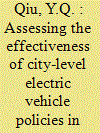

|
|
|
|
|
| Summary/Abstract |
Diffusion of electric vehicles (EVs) is regarded as an important strategy for promoting renewable energy development and controlling CO2 emissions in China. Thus, several incentive measures and policies have been released by the pilot cities in China. The question arises as to whether these policies are effective in promoting the EV deployment. This paper assesses the effectiveness of various EV incentive policies at city level by using the data from 88 Chinese pilot cities. Our regression results show a positive relationship between EV sales volume and two demand-side policies: charging discount and infrastructure construction subsidy. However, purchase subsidy policy is found to have no significant effect. Parking benefits policy shows no effect on promoting EV sales. On the other hand, two supply side policies — model development award and manufacturing award — are not effective. We suggest that local governments may keep those two effective policies, phase out the purchase subsidy policy, terminate the parking benefits policy and suspend the model development award policy. The manufacturing award policy can either be paused or be bundled with other regulations or policies that make specific requirements for EV quality.
|
|
|
|
|
|
|
|
|
|
|
|
|
|
|
|
| 2 |
ID:
184237


|
|
|
|
|
| Summary/Abstract |
The global spread of Pentecostalism has been facilitated by a combination of transnational impulses and indigenizing interests. In the case of independent Pentecostal megachurches, their growth in urban centres is reflected in both Western and Asian societies. Megachurches in America and Southeast Asia have flourished because of their unique blend of middle-class congregants, appeal to consumerist and popular culture, as well as their compatibility with the urban lifestyle patterns of their congregants. However, it would be a mistake to assume that the drivers of growth and the conditions behind the common features of these megachurches are the same. Examining Jakarta, Surabaya, Kuala Lumpur, and Manila, we show that megachurches are not located in shopping malls and commercial complexes merely for growth purposes or to align with the consumerism ethos of capitalism. Deeply local concerns, such as hostile neighbourhoods dominated by Muslim or Catholic majorities, have led to the camouflaging of Christian symbols in urban settings. The purposeful targeting of youth also reveals the Southeast Asian megachurch engaging with the new urban mobilities triggered by rapid economic development. We conclude that the Southeast Asian city’s structure and layout are being repurposed by Christian innovation and reinterpretation. Christianity in the Southeast Asian city is hidden in plain sight.
|
|
|
|
|
|
|
|
|
|
|
|
|
|
|
|
| 3 |
ID:
101256


|
|
|
| 4 |
ID:
184068


|
|
|
|
|
| Summary/Abstract |
Radical democracy is usually fleeting. What are the possibilities for institutionalising it? If we want to understand them, we have to look carefully at the institutions and practices of local government and distance ourselves from the ideal of the nation-state, focusing instead on the possibilities of the open city. In that context, this article refers back to the work of Hannah Arendt and Robert Dahl, considering it in light of more recent contributions from Nancy Rosenblum, Andy Merrifield, Jacques Ranciere, and others.
|
|
|
|
|
|
|
|
|
|
|
|
|
|
|
|
| 5 |
ID:
118687


|
|
|
|
|
| Publication |
2013.
|
| Summary/Abstract |
This article is based on a field survey conducted in a village whose lands were expropriated, its homes destroyed, and its inhabitants relocated to two blocks of flats built about a hundred metres from the village, and in which new neighbourhood administrations were set up. Supervision of the evictions by local authorities seems crucial in the process of adapting former villagers to their status as urban dwellers. However, the interactions between cadres and people in their new urban setting cannot be understood without taking into account the resistance that preceded the eviction, a resistance that we will seek to reconstruct.
|
|
|
|
|
|
|
|
|
|
|
|
|
|
|
|
| 6 |
ID:
171410


|
|
|
|
|
| Summary/Abstract |
Earlier emission peak and higher reduction rate after the peak are crucial for China's domestic low-carbon energy transformations and the 2 °C global climate target. However, much remains to be resolved concerning long-term sectoral and regional coping strategies. In this study, we developed a spatial downscaling framework to identify the roles played by different provinces and sectors in promoting early emission peak, and the spatiotemporal variations of city-level reduction potentials for the building sector by coupling an integrated assessment model with openly available information. Simulations show that peaking emissions five years earlier means an additional 12.5 Gt CO2 emission cut during 2015–2035 and building sector needs to increase renewable penetration to 22% and further improve emission efficiency by 12%, which are both greater than other end use sectors. More developed eastern regions would peak earlier than national target and some central cities are expected to double their per capita building emissions. While for the less developed northern and western regions to peak on time it is necessary that the gap of CO2 emission intensity between these cities and national average narrow down from 9.8t/thousand RMB in 2020 to 5.9t/thousand RMB in 2030.
|
|
|
|
|
|
|
|
|
|
|
|
|
|
|
|
| 7 |
ID:
101260
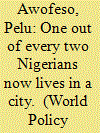

|
|
|
| 8 |
ID:
131817
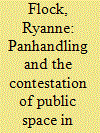

|
|
|
|
|
| Publication |
2014.
|
| Summary/Abstract |
Urban public space is a product of contestations by various actors. This paper focuses on the conflict between local level government and beggars to address the questions: How and why do government actors refuse or allow beggars access to public space? How and why do beggars appropriate public space to receive alms and adapt their strategies? How does this contestation contribute to the trends of urban public space in today's China? Taking the Southern metropolis of Guangzhou as a case study, I argue that beggars contest expulsion from public space through begging performances. Rising barriers of public space require higher investment in these performances, taking even more resources from the panhandling poor. The trends of public order are not unidirectional, however. Beggars navigate between several contextual borders composed by China's religious renaissance; the discourse on deserving, undeserving, and dangerous beggars; and the moral legitimacy of the government versus the imagination of a successful, "modern," and "civilised" city. This conflict shows the everyday production of "spaces of representation" by government actors on the micro level where economic incentives merge with aspirations for political prestige.
|
|
|
|
|
|
|
|
|
|
|
|
|
|
|
|
| 9 |
ID:
177942
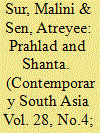

|
|
|
|
|
| Summary/Abstract |
This article explores the irreverent and supposedly irrational actions of two protagonists, Prahlad and Shanta, characters that the authors encountered during the course of their extended fieldwork in Kolkata. Prahlad is an Oriya migrant plumber who passionately seeks god at the cost of making money, and resists adhering to rational economic behaviour in the city. Shanta is a grieving mother who relentlessly seeks justice for her son’s disappearance during a revolutionary movement that consumed the majority of urban youth in the 1970s. Family, friends, neighbours and employers describe and at time dismiss rgen as pagla or insane. This article foregrounds these expressions of paglami or madness in Kolkata. We ask: how does close ethnographic attention to quotidian madness – its articulations, exploitations and resistances – enable us to rethink urban lives? We argue that dissension, alienation and ‘unreasonable fixations’ are affective thresholds of a changing city. They corroborate the ways in which the city’s transforming political landscape impinges on its ordinary lives.
|
|
|
|
|
|
|
|
|
|
|
|
|
|
|
|
| 10 |
ID:
080434


|
|
|
|
|
| Publication |
2007.
|
| Summary/Abstract |
Policing counter terrorism is increasingly seen as key task for police forces spanning the entire spectrum of size and capability. However, in the case of many police forces, resource limitations, low threat levels and coordination with national level law enforcement have combined to limit the expansion of their counter terrorism efforts to things like minor increases in training and heightened awareness. There are however, at the other end of the spectrum, some city police forces that have drastically reorganized and reoriented their day-to-day operations in response to heightened threats. Relying on their unique access to resources, political autonomy and unique threat levels, New York City and London have internationalized their policing efforts in an unprecedented way. This article explores the similarities, differences and dynamics of this phenomenon
|
|
|
|
|
|
|
|
|
|
|
|
|
|
|
|
| 11 |
ID:
140295
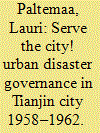

|
|
|
|
|
| Summary/Abstract |
Using new archival materials, internal publications, and gazetteers as its sources, this article studies the conduct of disaster governance in Tianjin city during the Great Leap Forward famine from 1958–1962. The city was organizationally well able to implement disaster relief efforts, and early on it took a number of measures to control and mitigate the food crisis that began in the city in early 1959. However, Maoist campaign-based disaster management could not work well when other campaigns were prioritized in its stead. Lacking central sanction for a major disaster relief effort, city leaders resorted to strategies that prioritized its residents over suburban peasants and outsiders. The city actively sought resources from outside while trying to prevent their outward flows. The city's own production of vegetables must not be overlooked as one of the reasons for better survival rates among urban residents, but even this policy was hampered by other Great Leap Forward initiatives. In the case of Tianjin, urban disaster governance of the famine was inward-looking and, at the same time, constrained and reliant on the central government.
|
|
|
|
|
|
|
|
|
|
|
|
|
|
|
|
| 12 |
ID:
077877
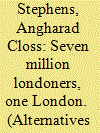

|
|
|
|
|
| Publication |
2007.
|
| Summary/Abstract |
This article explores the different ideas of community circulating in the aftermath of the 7 July 2005 bombings in London. Specifically, it compares the idea of a community in unity with a more cosmopolitan, urban idea of community. While these two ideas seem to present sharply different responses, the article questions the extent to which the cosmopolitan model offers an alternative to the nationalist idea of community. Drawing on various discussions about how ideas of community are produced through different understandings of time and origins, the article argues that in this specific case both the national and the cosmopolitan accounts of community worked according to a very similar logic, and therefore risked reproducing similar problems and exclusions. Consequently, the article suggests that the task of exploring alternative conceptions of community must involve greater sensitivity to the politics of time and other approaches to the politics of origins. This challenge is pursued through the motif of the city as a site expressing a different temporality and thus a different idea of community from that expressed in traditions of national belonging.
|
|
|
|
|
|
|
|
|
|
|
|
|
|
|
|
| 13 |
ID:
105908


|
|
|
|
|
| Publication |
2011.
|
| Summary/Abstract |
This paper explores the emergence of violent child identity politics in a communally sensitive urban slum in Hyderabad, a city in southern India. My ethnographic landscape is Sultanpur, a Muslim-dominated ghetto in the northern quarters of Hyderabad, which has been marked by decades of hostilities between local Hindus and Muslims. These tensions had everyday and extreme manifestations (ranging from quotidian expressions of symbolic violence to rioting, looting and bomb blasts) which increased the vulnerabilities of Muslim male children in the slums; the latter being humiliated by ordinary passers-by in times of peace, and at other times being attacked by rioting mobs. To counter their victimhood and organise their own retribution, sections of local boys in Sultanpur, aged between 9 and 14 years, co-ordinated themselves into child squads (bacchon ke fauj). These child vigilantes patrolled the slum borders and common public places, constantly establishing a disciplinary control over fragile aspects of ghetto life. For example, the male child squads not only aggressively prevented members of other communities from entering the slum, they also monitored the movement of Sultanpur-wallahs, often physically assaulting local women who were caught having affairs with Hindu men. In my paper I show how the power, presence and practices of these child squads upturned traditional structures of male and female authority, contested conventional notions of male childhood in a volatile urban space, and sustained nascent masculinities within the moral and social economy of impoverished Muslim male children.
|
|
|
|
|
|
|
|
|
|
|
|
|
|
|
|
| 14 |
ID:
129526
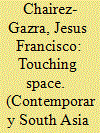

|
|
|
|
|
| Publication |
2014.
|
| Summary/Abstract |
Although B.R. Ambedkar, the chief architect of the Indian Constitution, is well known for his struggle against caste and the practice of untouchability, his ideas have seldom been linked to concepts such as nationalism or space. In an attempt to shed some light upon this under-explored subject, I analyse the relationship between the village, the city, the practice of untouchability and the emergence of nationalism in Ambedkar's thought. Focusing primarily on his writings, post 1935 concerning untouchability, I will argue that for Ambedkar, space played a critical role in both the perpetuation and evanescence of untouchability and similarly in the neglect and emergence of nationalism. More specifically, a small locus with tightly knit social and commercial associations, such as the Indian village, facilitated the ongoing differentiation of the population into two distinct groups, touchables and Untouchables. This social and spatial segregation perpetuated the practice of untouchability while preventing the growth of nationalism. However, a bigger and more crowded setting, such as the city, not only complicated the observance of social norms such as untouchability, but also benefited the creation of a corporate feeling of 'oneness' among individuals, which according to Ambedkar, was a condition for the emergence of nationalism.
|
|
|
|
|
|
|
|
|
|
|
|
|
|
|
|
| 15 |
ID:
144360
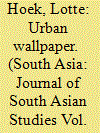

|
|
|
|
|
| Summary/Abstract |
What do film posters on city walls tell us about the relationship between the cinema and the city? In this paper, I rely on the practice and perspective of young men who put up film posters on Dhaka's city walls to explore this question. I argue that the wall is a key site for the production of a cinematic public that does not map onto film audiences; for the experience of newness in the city and of the cinema as analogous experiences; and for an encounter with imagery that is considered luminous and intense, assailing the crowds that pass by the posters in the congested city.
|
|
|
|
|
|
|
|
|
|
|
|
|
|
|
|
| 16 |
ID:
101255


|
|
|
|
|
|
|
|